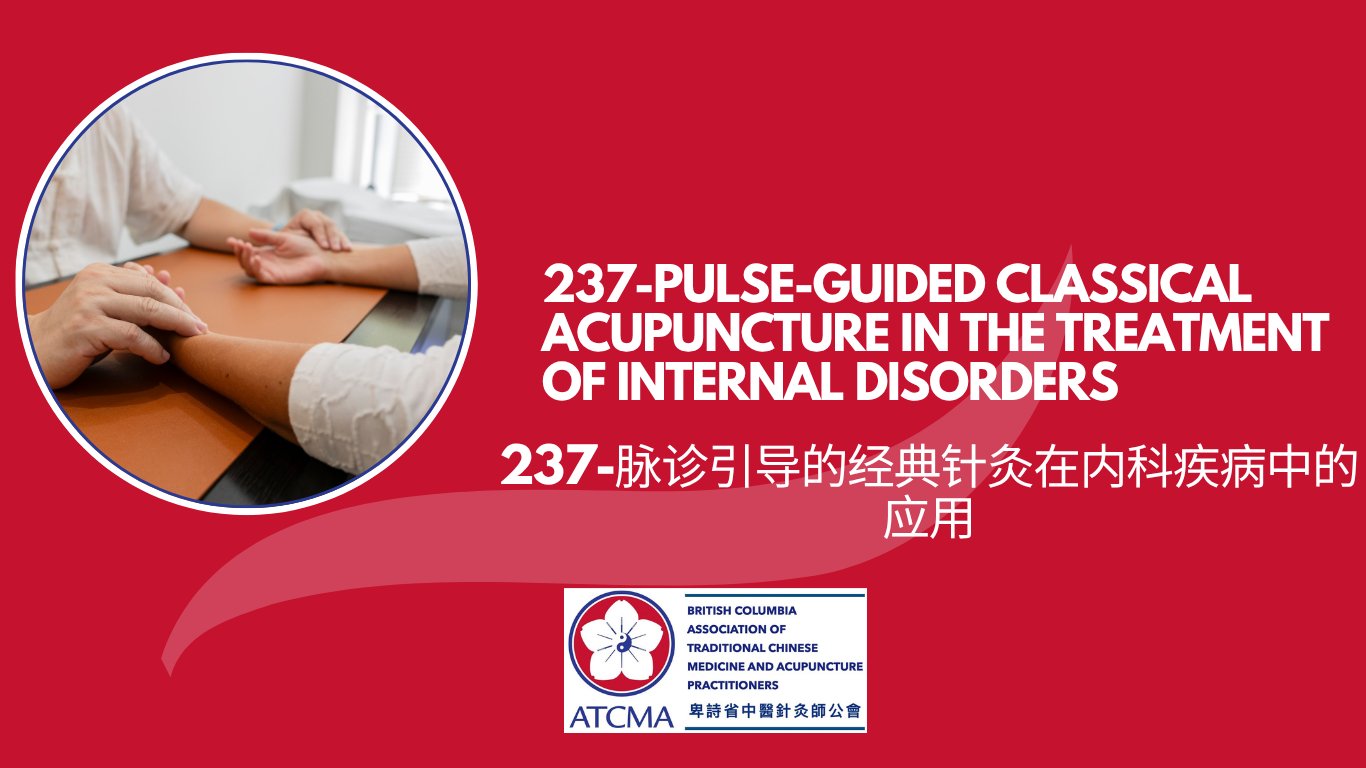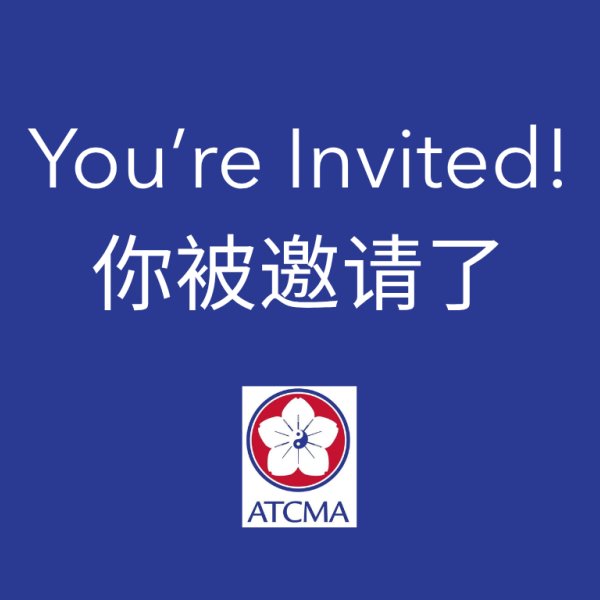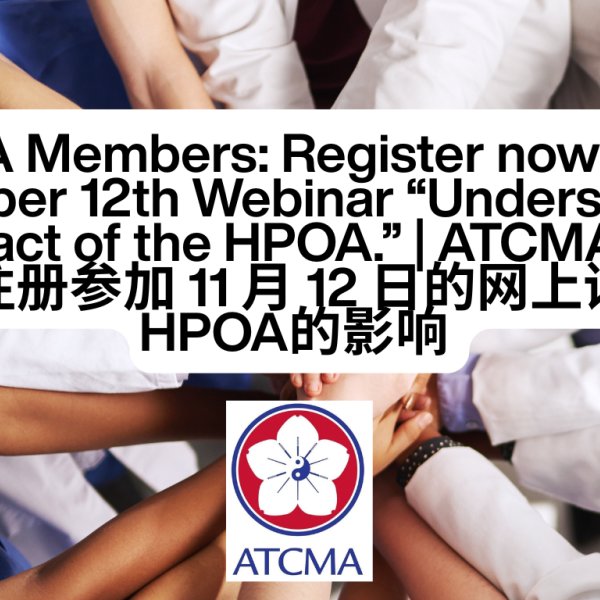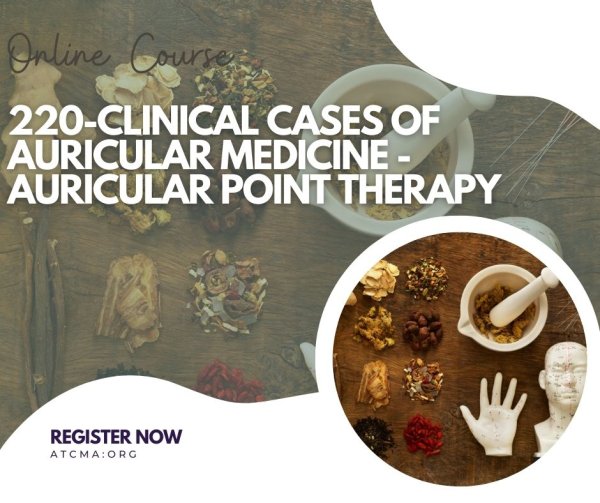
This lecture by Shang Wang explores pulse-guided classical acupuncture for internal disorders, integrating theories from the Huangdi Neijing, Nanjing, and Mai Jing. It highlights how pulse diagnosis informs point selection and treatment strategies, emphasizing individualized, dynamic approaches that restore balance—“以平為期”—and bridge classical wisdom with modern clinical practice.
Topic: Pulse-Guided Classical Acupuncture in the Treatment of Internal Disorders
Speaker: Shang Wang;
Shang Wang graduated from the Chinese University of Hong Kong majoring in Chinese Medicine. She currently maintains clinical practice in Vancouver and holds a faculty position at Tzu Chi International College of Traditional Chinese Medicine. At the same time, she serves as the Classics Consultant in the Academic Department of the Young American Association of Acupuncturists (YAAA). She previously had internship at the Affiliated Hospitals of Guangzhou University of Chinese Medicine, and in 2025 undertook advanced training in the Oncology Department of Jiangsu University Affiliated Hospital.
Clinically, Shang Wang specializes in both common and refractory conditions, with a focus on tumor rehabilitation, neurological disorders, immune-related diseases, and a wide range of chronic internal conditions.
As for her teaching, classes are structured around the systematic study of classical texts, supplemented by case analyses and practical training, with the aim of cultivating in students academic rigor and independent clinical judgment.
Lecture Outline
I. Introduction
- Origins of acupuncture in the Huangdi Neijing and Nanjing
- Defining “Classical Acupuncture”
- Theoretical Foundations and modern studies
- The role of pulse in clinical decision-making
- Relationships between meridians, viscera, and Qi & Blood
- Guiding point selection and tonification/reduction through pulse findings
- Why emphasize pulse-guided methods: the clinical value of linking pulse diagnosis to acupuncture treatment “以平為期”
II. Pulse Taking
- The Huangdi Neijing
- Visceral pulse imaging
- 3 parts 9 pulses (三部九候)
- Renying Cunkou pulse
- The Nanjing
- Visceral pulse imaging and its depth (chapter 4, chapter 5)
- Yin Yang pulse (chapter 6, chapter 7)
- 10 changes in pulse (chapter 10)
- Mai Jing
- Qi Kou Jiu Dao Pulse
III. Treatment according to the pulse
- Holistic view: regulating qi and blood dynamics of organs and meridians
- Flexible differentiation: tailoring points and techniques to pulse changes, moving beyond fixed prescriptions, adapting to moment-to-moment conditions
- Broader scope: not limited to pain management, but extended to complex internal disorders
IV. Case Studies
V. VI. Conclusion & Outlook
- Contemporary relevance of pulse-guided classical acupuncture
- Integrating classical principles into modern education and practice
- Future directions for research and opportunities for international collaboration
Related Courses
233-He Style Three Methods of Removing Obstruction
In over 50 years of TCM clinical practice and learning from other's strong points, Professor Puren He summarized and created a unique and effective acupuncture treatment system, named He Style Three Methods of Removing Obstruction.
220-Clinical Cases of Auricular Medicine - Auricular Point Therapy
Clinical Cases of Auricular Medicine - Auricular Point Therapy
217-Ziwu Meridian Style Needling-Clinical thinking on acupuncture of Ren and Du meridian
The Ziwu Meridian Style Needling is a perfect combination of the sum of theory and practice, adjusting the shape and treating spirit, maintaining integrity and innovation.

Category: Online Course
Topics: Acupuncture, Internal Disorders
Published: 14 November 2025





